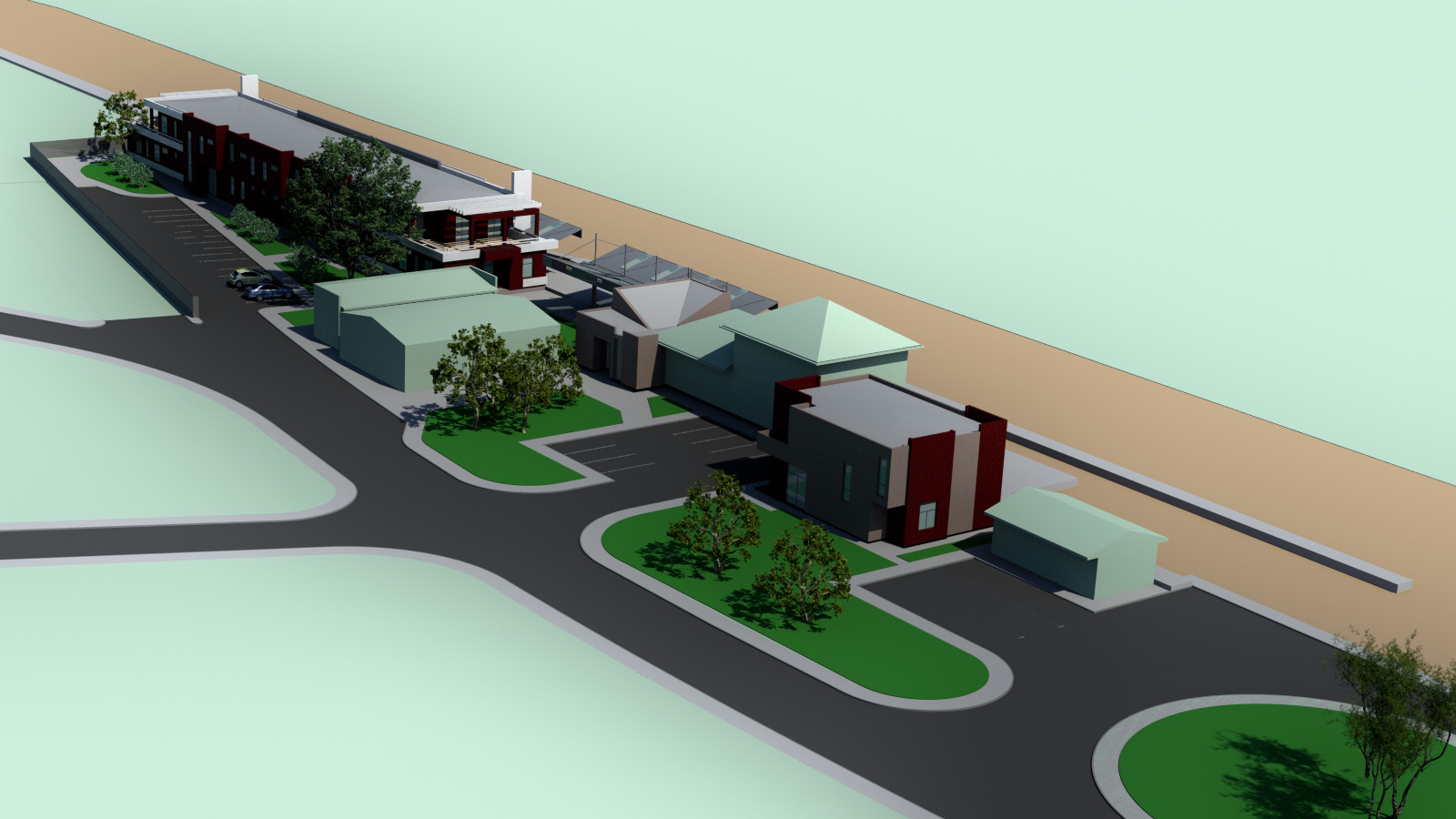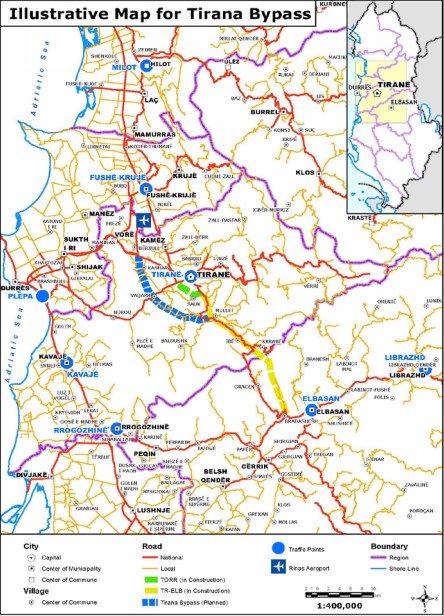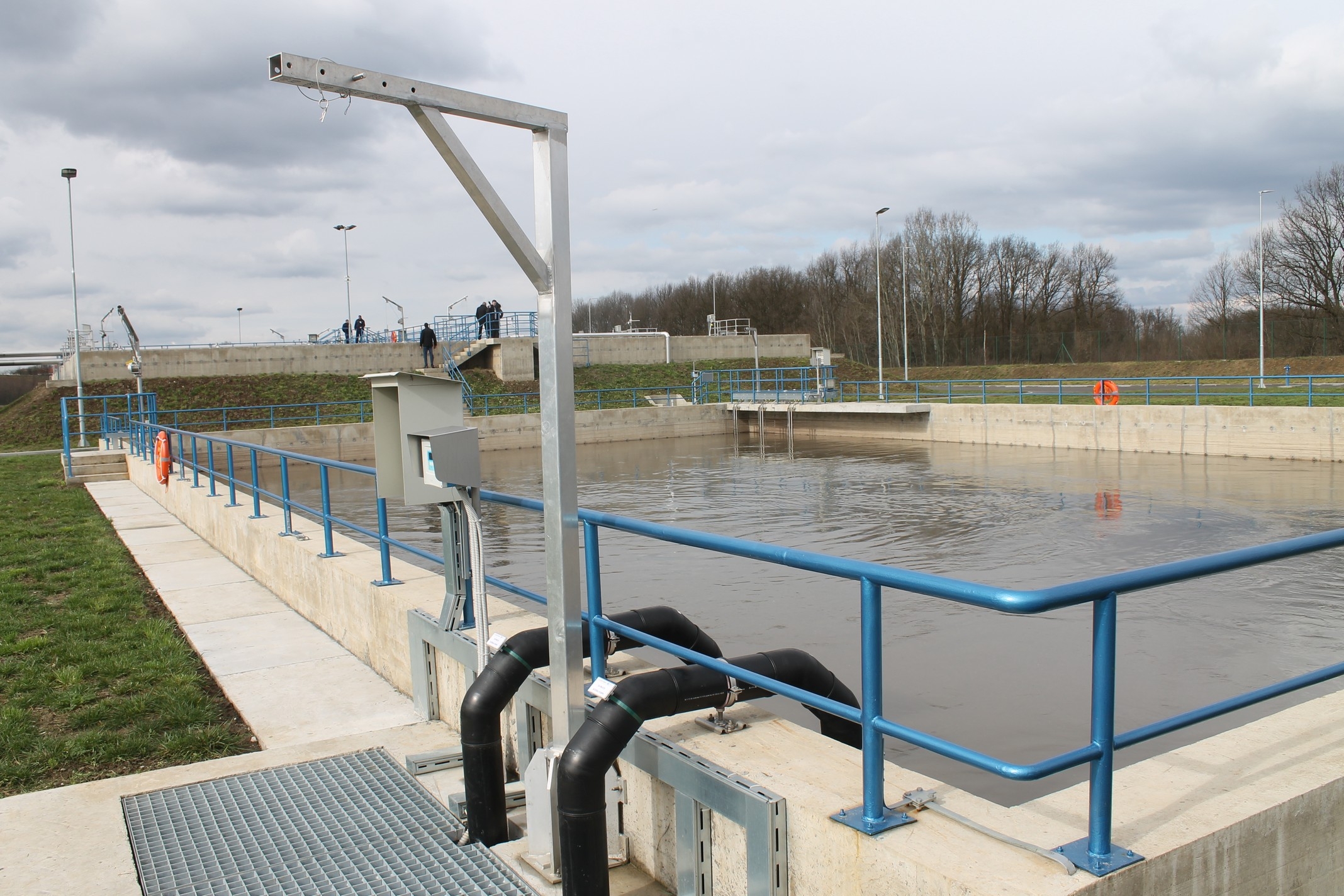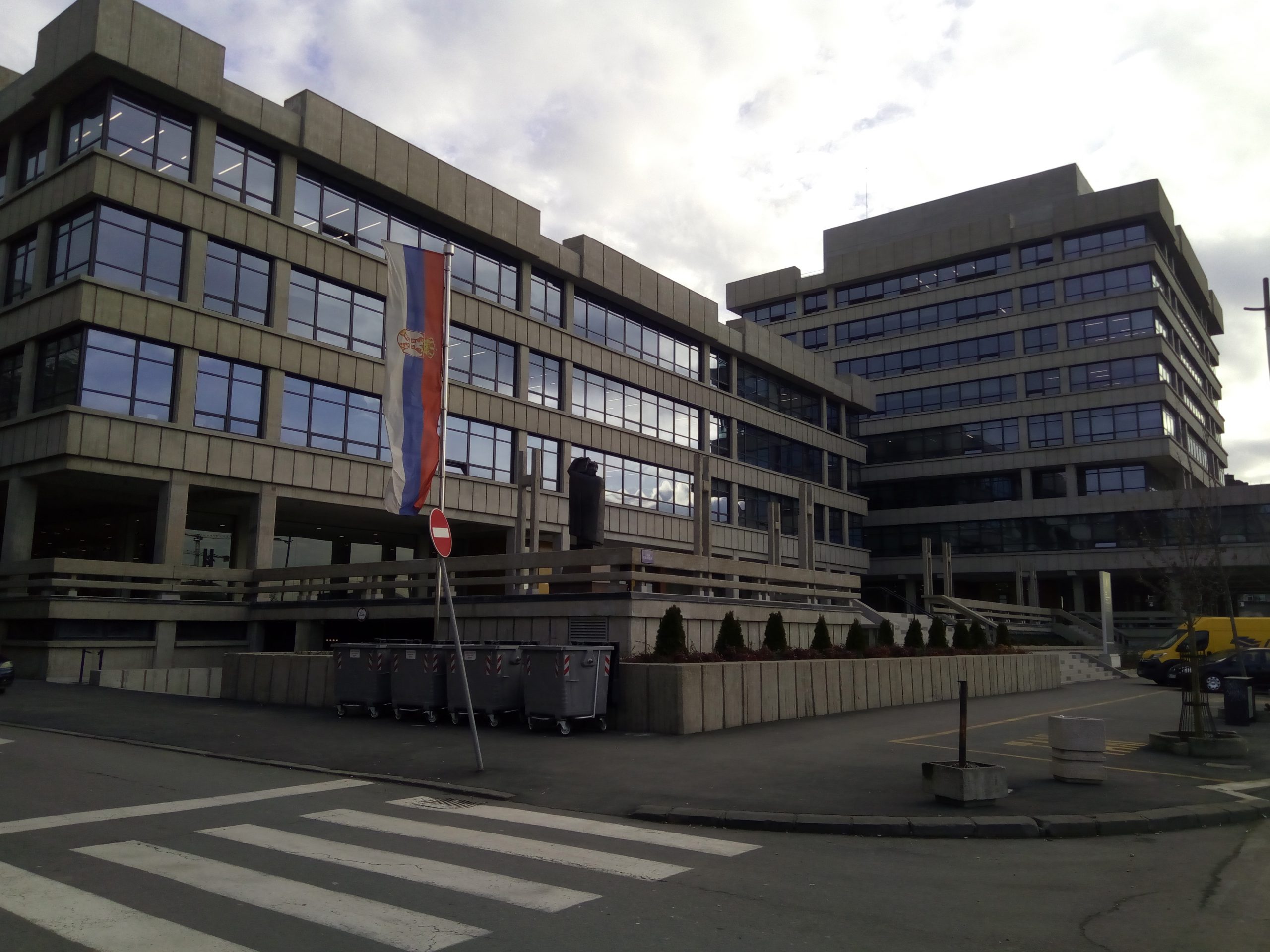Vassilis Evmolpidis is the Team Leader of the 
He was willing to share with us information about WBIF and his current project IPF8.
CBIB+3: What is the WBIF and what are its objectives?
IPF8: The WBIF is a regional blending facility supporting EU enlargement and socio-economic development in Albania, Bosnia and Herzegovina, Kosovo*, Montenegro, North Macedonia and Serbia (WB6). The WBIF was established in 2009 as a joint initiative of the European Commission (that provided regional IPA funds), the Council of Europe Development Bank, the European Bank for Reconstruction and Development, the European Investment Bank, and several bilateral donors and the governments of the Western Balkans. The World Bank Group, the KfW Development Bank and the AFD (Agence Française de Développement) subsequently joined the Framework. In December 2018, the AFD became a participating organisation in the WBIF. The blending refers to grants provided by EC, the donors and the International Financial Institutions (IFIs) and loans provided by the IFIs. The countries are expected to make their own contribution (usually 10%).
Another major objective is to facilitate EU accession across the WB6 through the provision of finance and technical assistance (TA) for strategic investments. The financing and technical assistance is provided to strategic investments in the energy, environment, social, transport, and digital infrastructure sectors. It also supports private sector development initiatives.
The Framework awards, based on competitive procedures, grants for infrastructure project preparation activities (TA) as well as for investments. Calls for proposals are launched by the WBIF Steering Committee. Generally, there are two calls for TA and only one call for investment grants per year. Guidelines are published for each call for proposals setting out eligibility criteria, including any specific requirements, as well as the pre-notification and submission deadlines. Applications are assessed by the WBIF’s Project Financiers’ Group, which recommends selected applications for approval to the Steering Committee. Approved grants are then implemented by the Infrastructure Project Facility (IPF) teams and/or the IFIs themselves. As of recent, the calls for investment grants are also published two times a year. Each TA or investment project should have a lead IFI supporting it.
WBIF is run by the WBIF Secretariat which is supported by IFICO, the IFI Co-ordination Office project that is contracted directly by EC DG NEAR.
CBIB+3: Who are the WBIF bilateral donors?
IPF8: The Bilateral Donors contribute financial resources and advice on projects as well as actively participate in WBIF governance, notably to the Steering Committee, which they co-chair on a rotating basis. At individual country level, the Bilateral Donors are invited to the National Investment Committees meetings, where Projects in need of financial assistance are identified and prioritised according to each beneficiary’s development needs and strategies.
The largest individual cumulative pledges to date have been made by Norway, Sweden, Austria, Germany, Italy, and United Kingdom.
CBIB+3: There are several different technical assistance projects going on in parallel under the WBIF in addition to the investment Projects financed within the WBIF. Could you please explain their mission?
IPF8: The TA projects are intended to facilitate Project[1] preparation and cover all phases of a Project development: Identification, Pre-feasibility Studies and conceptual design; Feasibility Studies and Preliminary Design; Cost Benefit Analysis (CBA); Environmental and Social Impact Assessment of the Projects; Detailed, Main or Construction Design; Tender Document preparation; support to PMU/PIU through technical assistance. As mentioned above, the TA projects are performed either by the IPFs or by the IFI themselves.
Currently there are 5 IPFs in progress, IPF6 (with planned completion in August 2021), IPF7, IPF8, IPF9 and IPF10 (which was initiated in January 2021)[2]. Each IPF implements between 14-18 projects in parallel in the above mentioned 5 infrastructure sectors. The projects take an investment Project from the early stages of its inception (Identification) to level of increased maturity (Detailed Design, Tender Documents) for implementation. The financing of investments has started since 2014 and is intended to provide grants which lever the loans provided by the IFIs. Till 2020, the grants of EU were supporting Projects in the Connectivity Agenda, for transportation and energy sectors. Projects in environment and social sectors received grants only through the Bilateral Donors. As of 2021, EU grants cover investments also in the Digital sector and would also support projects in environment and social sectors.
In addition, as a response to the COVID-19 pandemic the EC – as of October 2020- has decided to further invest and support Flagship Projects in all above 5 infrastructure sectors of the economy under the Economic and Investment Plan for the Western Balkans. The EC will mobilise up to EUR 9 billion of IPA III funding for the period 2021-2027 to support economic convergence of WB6 with the EU primarily through investments and support to competitiveness and inclusive growth, sustainable connectivity, and the twin green and digital transition.
CBIB+3: Could you please explain how the entire WBIF mechanism is functioning: management, application and selection process, grants and/or loans, etc.?
IPF8: The WBIF provides grants for energy, environment, social, transport, digital infrastructure development infrastructure Projects, following bi-annual open calls for proposals. Private sector development grants may also be allocated to specific initiatives which complement the infrastructure projects and help achieve the Framework’s goals and objectives.
Project applications must meet the eligibility criteria set forth for a specific Call that are made in January and July each year while responding to the requirements detailed in the Guidelines relevant for the type of grant support: TA or investment. Moreover, as defined by the WBIF Steering Committee, only projects submitted and/or endorsed by the National IPA Coordinators (NIPACs) are eligible for consideration. Inquiries regarding the WBIF grant application process or a specific Call should be addressed to: NEAR-WBIF@ec.europa.eu.
The applications are submitted through a standardized format, on the Management Information System (MIS) supporting WBIF. The format requires that the proposals should demonstrate compliance with eligibility criteria and the maturity of the Project so that Project implementation can be achieved without obstacles and delays. The beneficiaries proposing the Projects, should previously discuss their proposal with an interested IFI which -following the endorsing the proposal- supports it during the TA and during the implementation. Likewise, the beneficiary countries are expected to commit themselves to implement the Project with the support of the specific IFI. A budget has to be prepared for the entire Project and its phases. The TA services are applied for through the TA Grant Application Forms and the services – to be supported through grants – should be budgeted as accurately as possible. The NIPAC of each country, after endorsing the proposal, submits it to the WBIF Secretariat.
All Proposals are first screened by the EC DG NEAR through the assistance of IFICO and IPFs. EU Delegation offices in WB countries and IFIs also participate to the screening. Following the screening, the beneficiaries may have to improve or adjust the proposal including the budget.
In case of proposals for investments, the Investment Grant Application Forms is used. The budget should derive from the last Project preparation phase and the respective Tender Documents. Depending of the sector and the project, the EU grant financing of investment Projects varies from 20% to 50%. Investment Grant Application Forms are submitted by the NIPAC of each country, after endorsing, to the WBIF Secretariat.
It is important to note that projects can be national (involving one of WB6) and/or regional (involving 2 or more out of WB6). In case of regional Projects that advance into construction, each country has to apply separately for the part of the Project to be implemented in its own territory. Regional projects may also be “soft” projects, meaning that they can involve more than 2 countries in matters relevant to all. For example: Digital Ring in WB6; Regional Study for Voltage Profile Improvement: Feasibility Study. Some other examples of “hard” regional Projects are; Technical Documentation Preparation and TSO Support for 400 kV Interconnection Serbia – Montenegro – Bosnia and Herzegovina; Regional Study on Renewable Energy Potential and Energy Efficiency in the Western Balkans; Feasibility Study for Adriatic Ionian Highway/Expressway (Routes 1&2).
CBIB+3: You have already mentioned that five infrastructure sectors as well as private sector are covered with the investment projects. Could you please provide a bit more information on what kind of activities are covered by each sector?
IPF8: Transport sector typically includes road/highway and railway Projects. A few border crossing stations, ports and urban projects have been also funded. Energy sector encompasses Projects in Renewable Energy Sources (including hydropower), Gas pipelines, high voltage electricity transmission lines, Smart metering, District Heating. Social sector encompasses: schools, universities, hospitals and health centres, court facilities, prisons, social housing. Environment sector includes: water supply, water and waste water treatment plants, solid waste processing and flood protection. Digital sector covers: broadband network development, digitalization of public and educational services, data centres.
CBIB+3: Now after more than10 years of implementation of WBIF investment projects, could you please share with us your impressions on where do you see the major improvement in the region?
IPF8: WBIF is considered one of the most successful instruments of European Union overall and in WB6 in particular. This instrument delivers results faster than in other instruments and guarantees adherence to international standards of science and technology while respecting local standards and regulations. Having loan agreements already signed greatly facilitates the implementation of the Projects. Countries have been supported also to develop a priority list of investment projects, in what is commonly known as Single Project Pipeline. Some of the projects have been already constructed and are now operational. I will provide you with some Projects the preparation of which was done by various IPFs including IPF4 and in IPF2 that I also managed as Team Leader, some of which are completed and operational while others are one step before implementation through grants and loans:
Albania: the Tirana Bypass (Kashar – Vaqarr – Mullet) for which the Feasibility Study and the Preliminary Design was prepared by IPF2, while the Detailed Design is being prepared by IPF5. The project is approved for implementation through EU grant and EBRD loan.
Bosnia and Herzegovina: the Waste Water Treatment plant of Bijeljina in BiH the design of which and the Tender Documents were prepared by IPF2 and it was implemented through EBRD loan.
Montenegro: the signalization of Podgorica Railway Station as part of the project “Reliability and Safety Improvement of Bar – Vrbnica Railway Line (SEETO Rail Route 4)”for which the design was prepared by IPF4, while at present the signalization of several other railway stations is being prepared by IPF6. The project is approved for implementation through EU grant and EIB loan
North Macedonia: Preparation of the technical documentation for the construction of the Railway Joint Border Station between North Macedonia and Serbia at Tabanovce, all design phases of which were implemented by IPF4 while the road connection between the Highway Border Crossing Station and the New Railway Border Crossing Station was studied by CONNECTA. The project is approved for implementation through EU grant and EBRD loan.
Serbia: Modernisation of Judiciary Facilities/Palace of Justice [Palata Pravda (High Court)] Building in Belgrade, the preliminary and detailed design of which was carried out by IPF2, while the supervision of construction was carried out by IPF5. The project was implemented through EIB loan. Between IPF2 and IPF5, IPF3 supported the PIU and prepared the Tender Documents of the Project.
Kosovo: Improvement of District Heating, Phase 2 – in Prishtinë/Priština, the feasibility study of which was prepared by IPF2. The project was implemented through KfW loan.
CBIB+3: Could you please share with us the examples of some regional investment projects implemented under WBIF?
IPF8: The commitment for a regional project should exist from the outset from all countries involved, because typically such Projects do not deliver their full results without being implemented throughout, i.e. in all the countries that are involved. Typical examples are: the 400 kV Interconnection Serbia – Montenegro – Bosnia and Herzegovina; 400kV Interconnection Bitola (North Macedonia) – Elbasan (Albania) Line and Substation. Clearly this means that the countries involved should have agreements and common understanding in the implementation of such projects. Another example is the Peace Motorway between Serbia and Kosovo (Niš– Merdare – Prishtinë/Priština Motorway), for which the designs in both countries are in advanced stage of development while loan agreements have been signed and grant funds have already been approved for the construction of the motorway in section: Merošina – Beloljin on the Niš – Pločnik section (loan agreements have been signed with EIB and EBRD) and Merdare – Prishtinë/Priština (EBRD is the lender) while EC is providing grant funds.
CBIB+3: Could you share with us some information on the projects that are currently in the pipeline? What is the expected impact of these investment projects?
IPF8:I think the examples I gave above provide information for benefits such as improved environmental conditions, economic development through reduced travel times, better transport and communication conditions, better services to the public, reduced impacts from flooding, international cooperation and others. But I can add another example from a Project in the rather novel Digital Sector. In Albania, in 2017 a Pre-feasibility Study was prepared by UNDP financing of Broadband Network Development. IPF8 implemented the follow-up Feasibility Study and Conceptual Design for this Network funded by WBIF. Currently there are two new projects approved by WBIF, to be implemented also by IPFs for the next stage of design, the Environmental and Social Impact Assessment and the Tender Documents preparation for the implementation of broadband networks in rural and so called “white” areas in five North and four South Regions in the country. They provide major benefits such as: social inclusion, regional tourist development with resulting economic benefits, enabling local populations to stay in rural areas rather than emigrate, and others.
CBIB+3: You are in the WB region for more than 12 years now. You have seen the infrastructure of the entire region going under the substantial change, what can you say about mindset of the people living in this area?
IPF8: I have seen indeed great development of the infrastructure of various sectors in all WB countries. The examples I gave above are very limited, but when one considers that there have been 251 TA projects implemented and 60 investment projects constructed or under construction or to be constructed with a total budget of €1.27 Billion, the impact of WBIF can be clearly understood. It is important to note that EC in particular coordinates implementation of Projects with WBIF and national IPA funds hence maximizing the respective impacts and benefits. IFIs have also similar approach. We have also to point out that EU and IFI financed projects are expected to satisfy important social and economic benefits while also reducing environmental impacts and leading the way to a green economy. The people in the countries do appreciate the contribution of these funds to the local economies and overall development. This appreciation is accentuated by proper visibility activities that EC undertakes and encourages. IPFs are also responsible and do contribute through the implemented projects to this visibility.
More information on WBIF and its Projects can be found at WBIF web page https://www.wbif.eu/.
[1] In the text below, the term project (with small p) is used for TA activities, while the term Project (with capital P) is used for investment/construction activities.
[2] After IPF3, all IPFs are contracted and managed by EIB.







